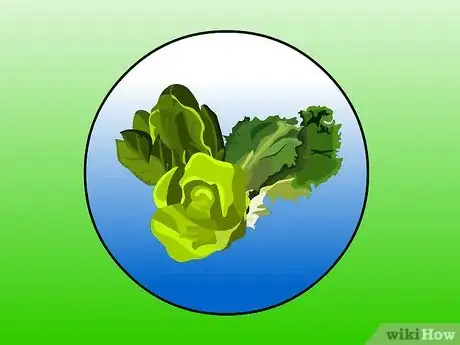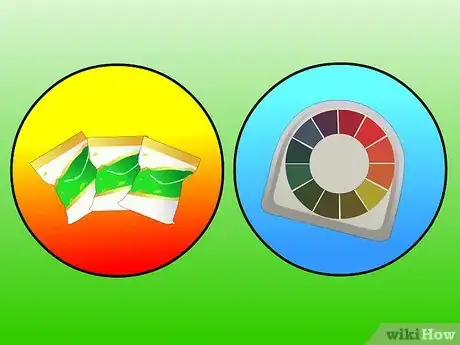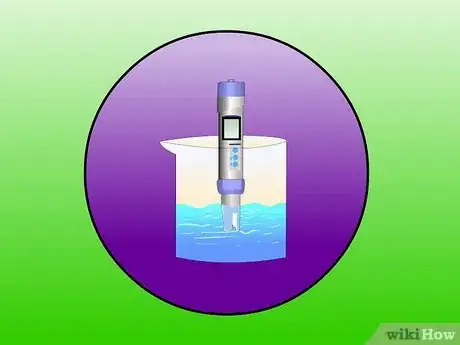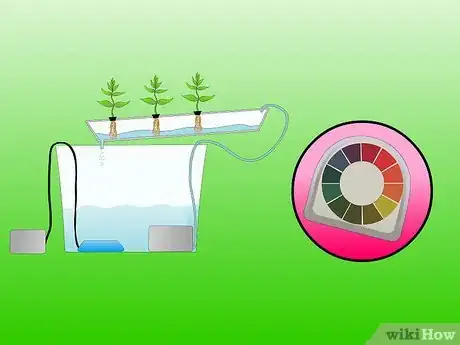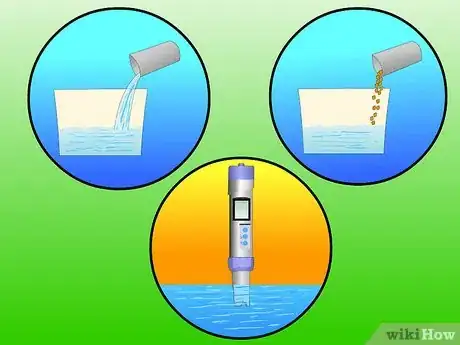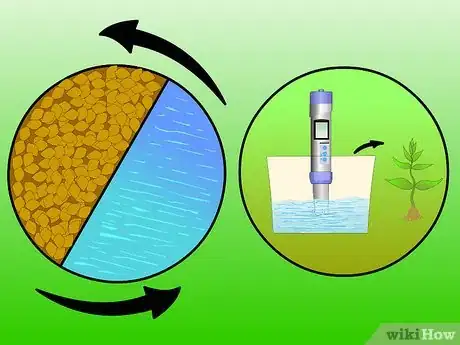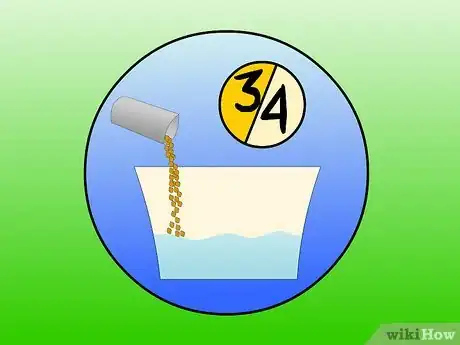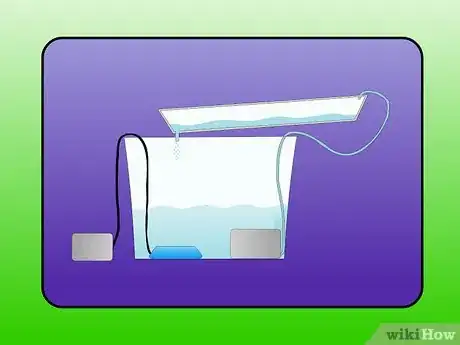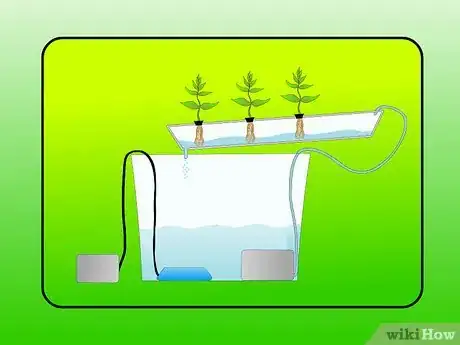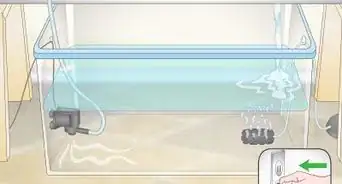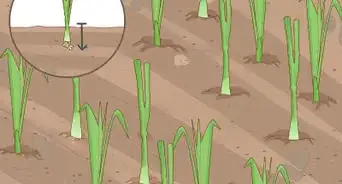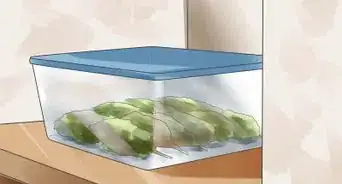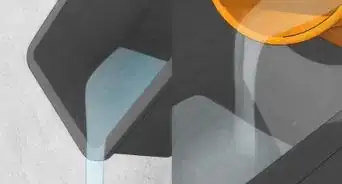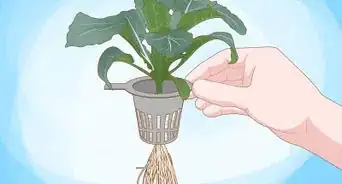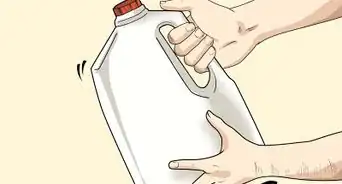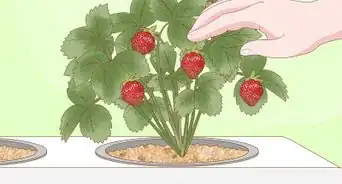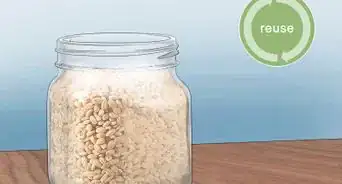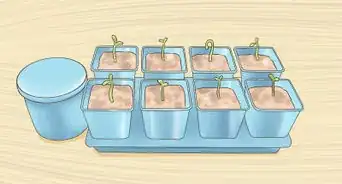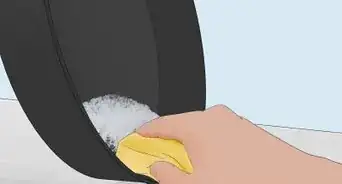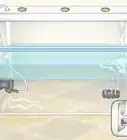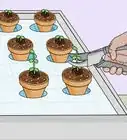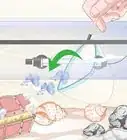wikiHow is a “wiki,” similar to Wikipedia, which means that many of our articles are co-written by multiple authors. To create this article, 29 people, some anonymous, worked to edit and improve it over time.
wikiHow marks an article as reader-approved once it receives enough positive feedback. In this case, 92% of readers who voted found the article helpful, earning it our reader-approved status.
This article has been viewed 245,408 times.
Learn more...
A solid foundation for maintaining your hydroponic nutrient solution reservoir! A reservoir forms the center of every single type of hydroponic growing system. These basics give you effective control over every system type. Be a successful hydroponic gardener by effectively maintaining your nutrient solution reservoir.
Steps
-
1These notes are for a wide range of vegetables used for human consumption.[1]
-
2A wide range of vegetable types need a wide range of nutrient and pH levels. Guides are available from the internet and some nutrient suppliers.[2]Advertisement
-
3Check the water quality with your TDS/PPM EC meter from a sample before putting it in your reservoir. Tap water measuring 300 ppm or greater indicates that you may need to run either a reverse osmosis system or distill your water. You want to be sure of the total PPM of the water you are putting to your plants before adding nutrients, is between 0-50ppm, anything over 100 is acceptable just be wary of some of the micro nutrients that might be in your test water. See the "Tips" section for ideas on tap water usage.
-
4Use a digital probe to measure the strength and pH of the nutrient solution every day and do this close to the same time every day. Make notes in a diary to keep track of events and changes.
-
5With nutrients in your reservoir, you can't get a proper reading with paper strips or test tube drop kits. For more accurate readings of your test equipment, test after the nutrient has been run through your system at least once (twice is good).
-
6Adjust the pH of your nutrient solution using propriety solutions such as pH Up or pH Down accordingly. Note: An adjustment in your solution's pH will affect its strength. The most affective is a pH of 5.5-6.2 never go higher than 6.5 or lower than 5.5 no matter what vegetables you are growing.[3]
-
7Use a TDS/PPM or EC meter to check the strength of your nutrient solution. If it is too strong, add water. If it is too weak, add a little fertilizer. [See Warnings] Make sure you re-test the pH after making changes.
-
8Change/top-up the solution in your reservoir when the TDS/PPM meter shows it to be at or below that which the plants require.[4]
-
9A proper top-up nutrient should not be used more than 3 to 4 times between full nutrient changes. Do not use full nutrient for top-ups.[5]
-
10It is good practice to have a nutrient reservoir as large or larger than the empty volume of the tub(s)/container(s). For example if a 20L tub is used then at least 20L of nutrient should be used, preferably more, twice as much is a good minimum. The volume of the growing medium not with standing in the volume calculations. The largest size nutrient reservoir (within reason) that can be implemented is better.
-
11Know that nutrient life is dependent on is volume and the requirements of the plants as well as the plant's transpiration rate, all of which vary greatly. However, ideally you should nutrient the water everyday, when you are starting out.
-
12When the nutrient is considered past its useful life it can poured on dirt grown plants.
-
13Hydroponic gardens grow better outside, but local weather conditions may affect it and should be taken into account. When growing outside all forms of falling water should be prevented from falling on the garden and so diluting the nutrient solution.
-
14When growing inside provision of suitable lighting may be required.[6]
Community Q&A
-
QuestionWhat is an alternative to dumping the reservoir solution onto the soil? That isn't a viable strategy if I want to be certified organic in a few years. Any more "environmentally friendly" alternatives to share with us?
 Community AnswerUse organic nutrients in your reservoir, or try running a compost tea through the system.
Community AnswerUse organic nutrients in your reservoir, or try running a compost tea through the system. -
QuestionAt what pH should my water solution be changed?
 Community AnswerIt depends on the plant you are growing, as some plants prefer a higher pH while others prefer a lower one. Most plants wont survive in acidic environment, however.
Community AnswerIt depends on the plant you are growing, as some plants prefer a higher pH while others prefer a lower one. Most plants wont survive in acidic environment, however. -
QuestionWhat are some good hydroponic nutrients?
 Community AnswerSome good hydroponic nutrients would be calcium, zinc, manganese, chlorine, potassium, copper, magnesium, sulfur, iron, and phosphorus.
Community AnswerSome good hydroponic nutrients would be calcium, zinc, manganese, chlorine, potassium, copper, magnesium, sulfur, iron, and phosphorus.
Warnings
- Some city's water that contain chlorine also contains bromine which may harm your plants, a way to get rid of this bromine is to fill a barrel (not your reservoir) with cold water, the next day you will notice that the walls of the barrel will have little bubbles sticking allover, just tap your barrels sides a few times until all of these bubbles float up to the top. This is called perking and is a very affective way to expel bromine, its also a lot cheaper than using aquarium tablets (See Tips for tap water use)⧼thumbs_response⧽
- Chlorine is rapidly dissipated from agitated water when exposed to air.⧼thumbs_response⧽
- Chlorine in tap water will not kill your plants, it can actually help them resist mold and mildew build up at the stock base.⧼thumbs_response⧽
- Sanitize your reservoir/pipes/tubes/tubs/pumps prior to use by pouring boiling water over all areas to be exposed to nutrient solution if your reservoir has become infected. With reasonable care hydroponic gardens do not become infected/contaminated.⧼thumbs_response⧽
- Do not use a top-up mix from a maker of a full/complete mix with another maker's top-up mix as the nutrient levels in each maker's mix will be different, you will radically alter the balance and your plants will suffer.⧼thumbs_response⧽
- If adding new fertiliser to an existing nutrient solution, be aware that you will also be adding more micro nutrients/trace elements as well. These nutrients DO NOT get used anywhere near as much as macro nutrients. As a result a build up of these micro nutrients in your reservoir will cause problems with your plants. Many nutrient makers sell a "top-up" mix just for this purpose. If replacement top-up nutrients are not available then use the spent nutrients on your dirt garden/lawn or where-ever, and make a fresh new batch each time.⧼thumbs_response⧽
- Plants will suffer from high over nutrition/over fertilization very quickly; an undernourished plant may last longer than an over nourished plant but will suffer from lack of nutrients.⧼thumbs_response⧽
Things You'll Need
- pH testing meter
- PPM/TDS/EC meter
- Possibly an aquarium air pump and air stone to suit reservoir size
- Hydroponic plant nutrients
- Water
- pH Up and pH Down (Commercial products from a hydroponic supplier)
References
- ↑ https://www.betterhealth.vic.gov.au/health/healthyliving/fruit-and-vegetables
- ↑ https://digitalcommons.unl.edu/cgi/viewcontent.cgi?article=2011&context=extensionhist
- ↑ https://www.gardenandgreenhouse.net/articles/plant-nutrition-articles/maintaining-balanced-ph-nutrient-solution/
- ↑ https://www.nosoilsolutions.com/maintain-hydroponic-reservoir/
- ↑ https://www.youtube.com/watch?v=a3T6e9FduuU
- ↑ https://todayshomeowner.com/how-to-grow-houseplants-in-artificial-light/
